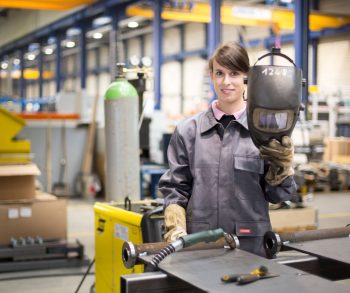TIPS TO AVOID WORK-RELATED EYE INJURIES
 Approximately 2,000 workers in the United States suffer job-related eye injuries every single day. Not just minor cuts and scratches, but serious enough accidents that require immediate medical intervention. If you work at any of these jobs, you should also know that with the right eye protection, you can reduce chances of severe injuries by as much as 90 per cent!
Approximately 2,000 workers in the United States suffer job-related eye injuries every single day. Not just minor cuts and scratches, but serious enough accidents that require immediate medical intervention. If you work at any of these jobs, you should also know that with the right eye protection, you can reduce chances of severe injuries by as much as 90 per cent!
That is a darn good reason to take a second look at your own working environment, and decide how you can upgrade the eye-protecting measures you may or may not be taking at the moment.
Flying missiles and foreign objects (like metal scraps, nails and wood chips) in the eye, and cuts or scrapes on the cornea are the most common eye injuries that occur at work. Others happen from grease and oil splashes, chemical contact, burns from steam and ultraviolet or infrared radiation exposure.
Some professions in non-industrial sectors like lab work, health care work and janitorial work poses eye risks of a different kind: infectious diseases. A lot of infectious diseases are transmitted through the mucous membranes of the eye, and this can occur through direct exposure to blood splashes, respiratory droplets (from sneezing, coughing), or from touching the eyes with contaminated fingers or other objects.
A word of advice: don’t depend on your employer to be completely on the ball with eye protection measures for his/her employees. If management is not providing sufficient safeguards, take it upon yourself to provide them on your own. No matter how large and satisfying your weekly paycheck is, no job in the world is worth risking your eyesight for.
A Bureau of Labor Statistics survey of workers who suffered eye injuries revealed that nearly 3 out of 5 were not wearing eye protection at the time of the accident. These workers most often reported that they believed protection was not required for the situation.
Occupations That Put Eyes at High Risk
• Manufacturing
• Construction
• Mining
• Carpentry
• Auto Repair
• Electrical Work
• Plumbing
• Welding
• Maintenance
Right Eye Protection for The Right Hazard
Working with chemicals:
• Wear Goggles
Working in an environment with excess dust particles in the air, as well as risks of flying objects:
• Wear safety glasses with “side protection”
Working near hazardous radiation (welding, lasers or fiber optics):
• Wear special-purpose safety glasses, goggles, face shields or helmets designed for that task
Working with infectious diseases:
• Depending on the nature of the possible threat, full-face respirators, facemasks etc. must be utilized.
